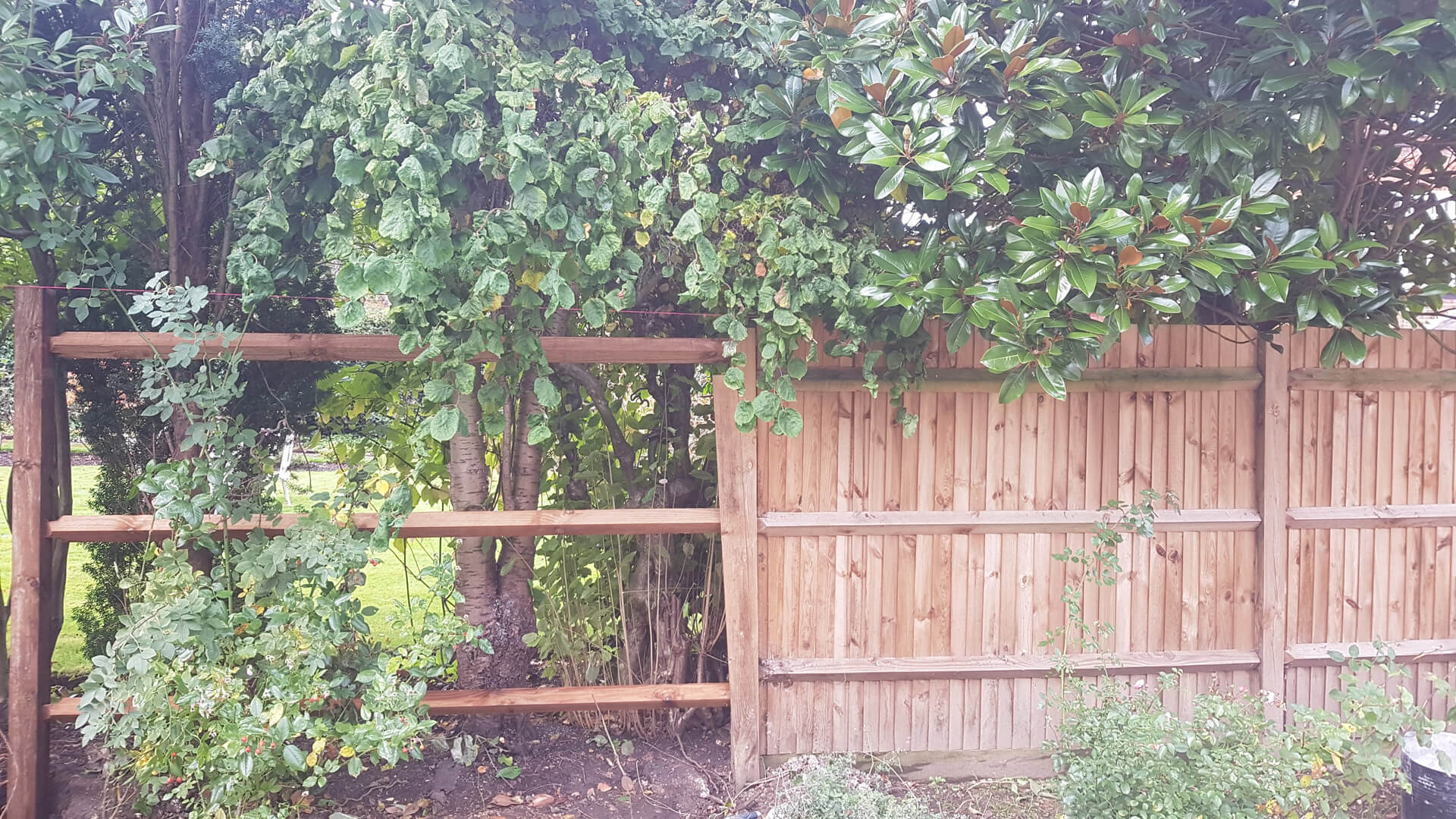Choosing the ideal height for your garden fence in the UK can sometimes feel like a puzzling task. Should it be high enough to keep prying eyes out? Or low enough to maintain a friendly vibe with your neighbours? Are there any restrictions on how high or low a garden fence should be?
Striking the right balance between privacy, aesthetics, and legal compliance can seem daunting. So, how high can a garden fence be? To help you navigate this conundrum, this post delves into the legalities and practical aspects of determining the perfect fence height.
General Rule of Thumb: The Ideal Fence Height
The most common rule of thumb when it comes to garden fence height is that it shouldn’t exceed 2 metres.
However, this isn’t a one-size-fits-all rule. The “ideal” fence height varies significantly based on numerous factors. These factors include:
- The nature of your locality
- The specific regulations of your local authority
- Whether your property is a listed building or within a conservation area
Always remember, what works for your neighbour might not necessarily be the best fit for you. So, if in doubt, consult your local authority or ask a reputable garden landscaper to help you fit your fence and manage the legalities for you.
Navigating the Legal Labyrinth
Resolving Fence Height Between Neighbours
If you’ve ever wondered about the appropriate fence height between neighbours, you’re not alone. In the UK, the maximum height of a fence, wall, or gate without requiring planning permission is 2 metres, or 1 metre if next to a public highway.
Nevertheless, it’s advisable to discuss your fencing plans with your neighbour, especially if you share a boundary line. Such open conversations can go a long way in avoiding unnecessary conflicts and maintaining cordial relations.
Decoding Front Garden Fence Height Regulations UK
The height regulations for front garden fences in the UK are distinct. If your fence borders a public highway (which includes footpaths and bridleways), the maximum height is capped at 1 metre. This regulation is intended to ensure visibility for pedestrians and vehicles and maintain the open character of the streetscape.
Read our article on garden fence regulations in the UK for more information.
Practical Aspects to Mull Over
1. Privacy
2. Aesthetics
Your garden fence should enhance the visual appeal of your home, not detract from it. Hence, it’s worth investing time in choosing a fence that blends well with your garden’s overall aesthetics. A trellis topper, for example, can add height and style to your fence.
Read our article on the different types of garden fence you should consider.
3. Security
Higher fences can deter potential intruders as they are harder to scale, offering an added layer of security for your home. However, you should also ensure that the fence does not block light, especially in smaller gardens, as this will reduce your enjoyment of your garden and also make it harder for sun-loving plants to thrive.
Special Cases: Conservation Areas and Listed Buildings
If your property is located in a conservation area or is a listed building, you may have to navigate a different set of regulations. In many cases, you will need to apply for planning permission for any fence over 1 metre high. Therefore, it’s crucial to check with your local authority before you embark on your fencing project.
Erecting Your Fence: A Step-by-Step Guide
Now that you’ve zeroed in on the ideal height for your fence, it’s time to roll up your sleeves and get to work. Here’s a simple, step-by-step guide to help you erect your fence.
- Boundary Line: Begin by accurately measuring the boundary line where the fence will be installed. This can prevent disputes with neighbours down the line.
- Fence Height & Style: Decide on the height and style of your fence, ensuring your choices are in sync with local regulations and your personal preferences.
- Purchasing Supplies: Purchase your fence panels and posts. Opt for sturdy and weather-resistant materials to ensure your fence stands the test of time.
- Installing Posts: Dig holes for your fence posts. As a rule of thumb, one-third of the post should be underground to ensure stability.
- Securing the Posts: Install the fence posts, making sure they are straight and secure. Use a spirit level for accuracy.
- Attaching the Panels: Attach the fence panels to the posts. Ensure they are level and evenly spaced.
Make Informed Choices with Green Team Landscaping
Understanding the legalities and practical considerations surrounding garden fence heights is crucial for all UK homeowners. While this might seem overwhelming initially, a bit of research and clear communication with neighbours can make the process straightforward and stress-free. Whether it’s ensuring a mutually agreeable fence height between neighbours or adhering to the specific front garden fence height regulations in the UK, knowledge is key in creating a home and garden that you cherish.
Remember, your fence is an essential part of your home’s exterior, but its height must comply with local regulations and serve your practical needs.
For help erecting your garden fence and ensuring compliance with local regulations, get in touch with the team at Green Team Landscaping. We’re experts in all aspects of garden landscaping and would be delighted to help you make decisions about fence height, style and material.


